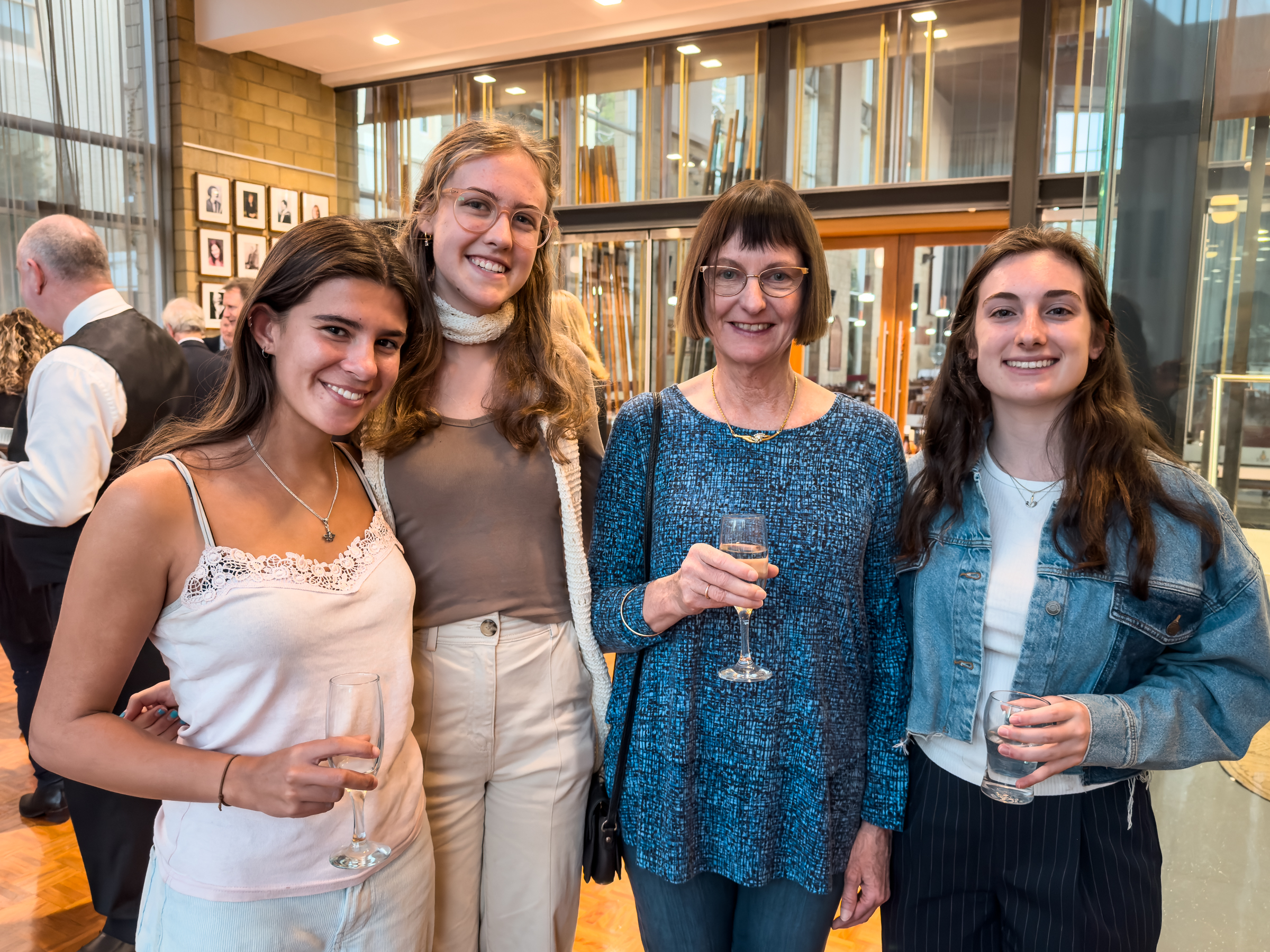Surfing gravitational waves to probe the dark side of the Universe

Above: Bezi Saunders (2nd year Science), Caroline Berg (2nd year Science/Engineering), Professor Scott and Chloe Campbell (1st year Biomedicine).
When Malcolm Turnbull initiated a leadership spill, ousting incumbent Prime Minister Tony Abbott on September 14 2015, Professor Susan Scott, may have been in Canberra but her focus was on a news event 1.3 billion years in the making.
The Distinguished Professor of Theoretical Physics at the Australian National University who is a Chief Investigator for the Australian Research Council Centre of Excellence for Gravitational Wave Discovery was in 2015, part of the team responsible for the first detection of a gravitational wave on Earth, coming from a pair of black holes, in a black hole binary system, colliding and merging to form a larger black hole.
During Professor Scott’s oration for the Sugden Institute on March 20, entitled ‘Surfing gravitational waves to probe the dark side of the Universe’, the thrill and excitement of that day was apparent.
“To put it into perspective on timescale, when these two black holes coalesced we had multi cellular life on Earth. About 100,000 years ago when the signal arrived in the Milky Way, Homo sapiens arrived in the Middle East. Then 100 years ago there was a genius, Albert Einstein, who developed the theory of relativity and found that it predicted gravitational waves. This was the first test of Einstein’s theory, when the gravitational field is very strong and highly dynamic during the merger phase.”
When Einstein announced his ground-breaking theory of relativity he thought the gravitational waves at its heart would be too weak for us to ever detect on Earth. Following a century of technological evolution, which included the development of the Laser Interferometer Gravitational-wave Observatories (LIGOs) in Hanford, Washington State and Livingston, Louisiana, USA, and the Virgo detector in Italy, detection was made possible, but the timing was tight.
“The LIGO detectors, the most sensitive instruments ever produced, had been upgraded. Much more advanced technology had been introduced and we had just come online again when the signal came in, so it showed that the increased sensitivity was really critical to making detection. It did take us by surprise.”
Two years later they detected the first binary neutron star merger and since then have officially announced more than 90 detections. Now with even further increases in sensitivity they are detecting a binary black hole system every three days. Professor Scott predicts that once full sensitivity is reached they will observe all the binary black hole mergers and binary neutron star collisions out to the edge of the Universe, making for multiple detections a day.
Professor Scott engaged in a robust Q and A session with guests, including several current students, highlighting the day to day benefits of gravitational waves.
“The technology that has been developed in order to advance our knowledge and understanding of gravitational waves has resulted in instruments with the biggest lasers, the best vacuums and the highest sensitivity. These technological breakthroughs have been used in other applications. On the theory side, without general relativity and special relativity, your GPS systems are not going to work and you have those systems in every aspect of your life.”
Professor Scott’s work is far from over.
“We want to detect a supernova and use the gravitational waves from its centre so we can understand how they explode. Neutron star physics is poorly understood and by detecting the gravitational waves which they radiate it can be unlocked. That’s something I’m very involved in at the moment. Also, because gravitational waves travel freely from the start of the Universe we want to probe these waves, but we will need yet more sensitivity to do so.”
